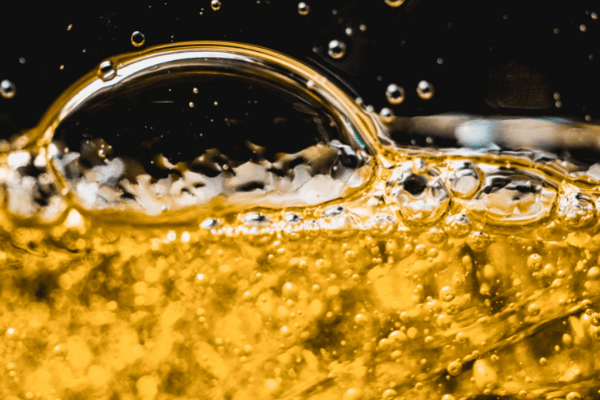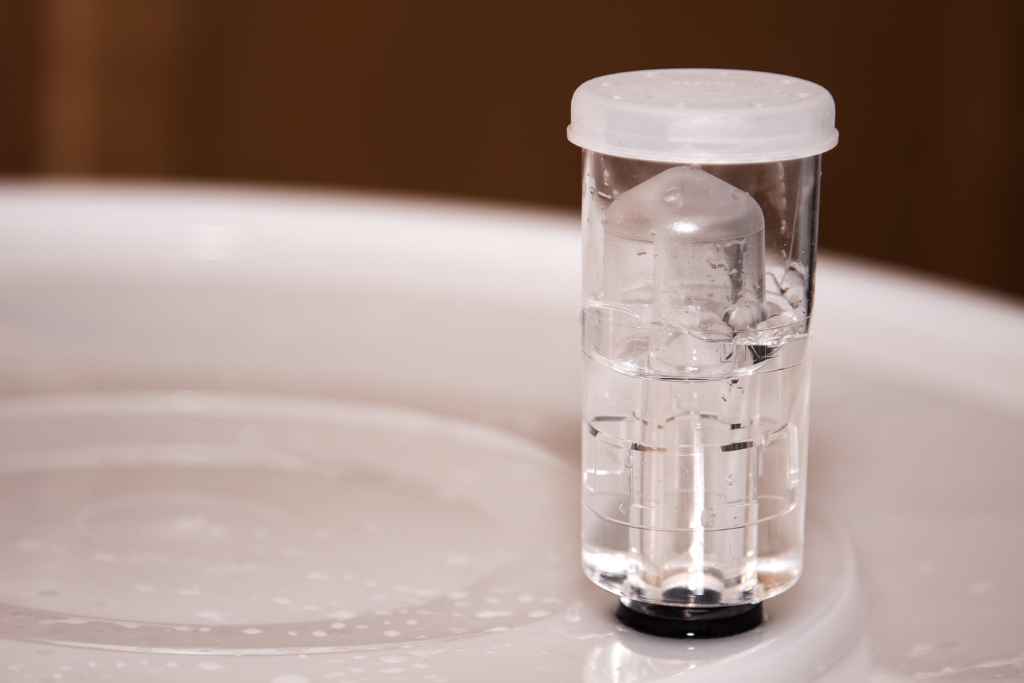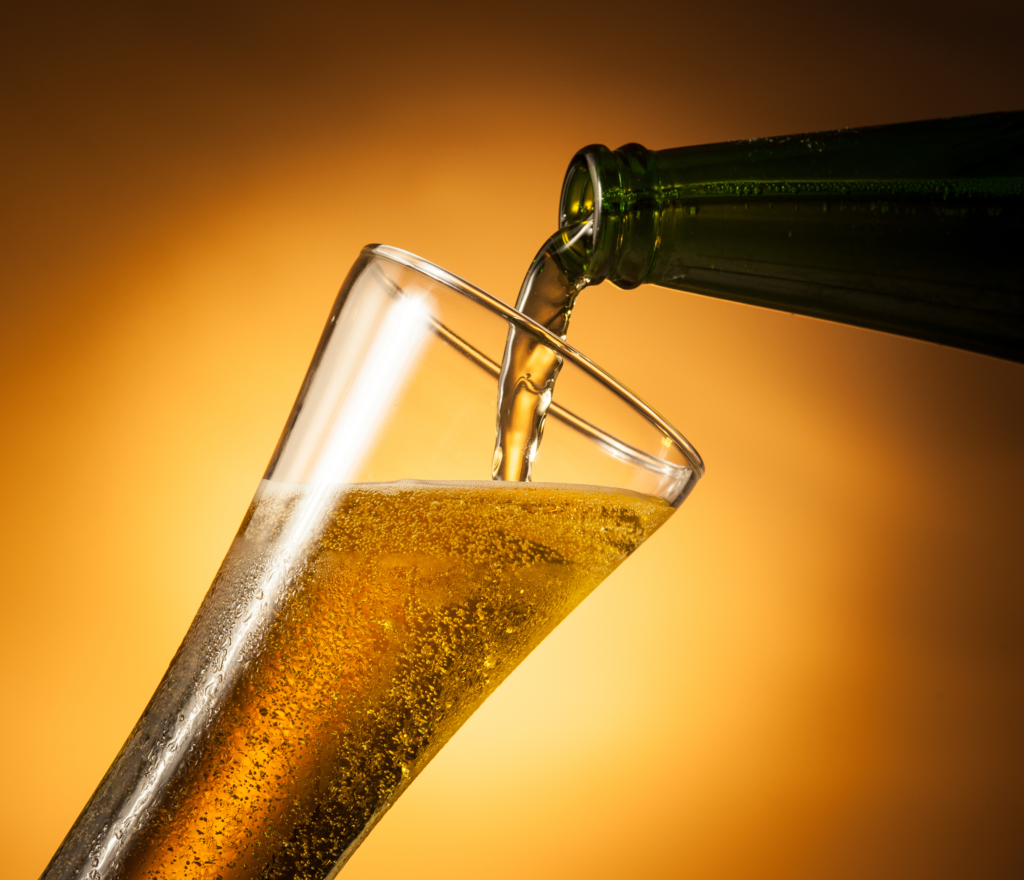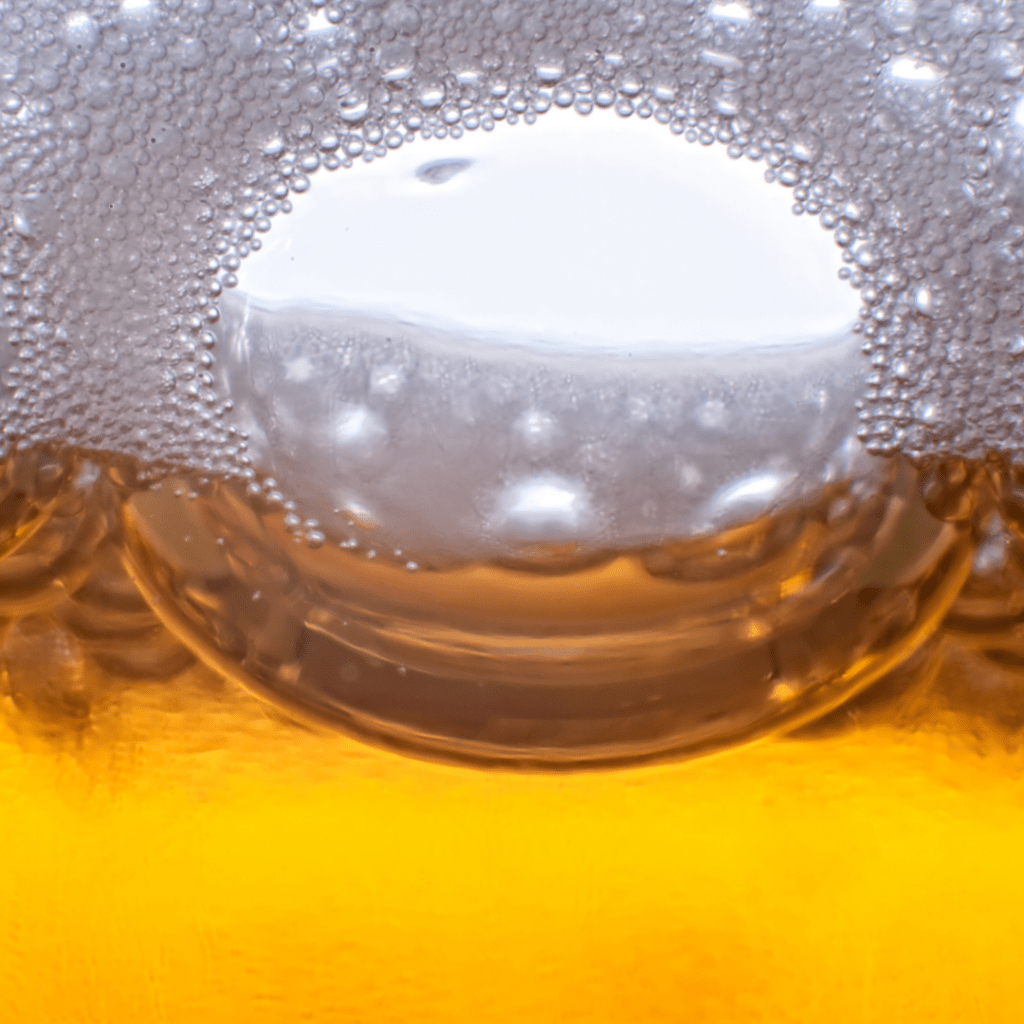
Introduction
We’re back with another installment of commonly asked questions that aren’t answered in many FAQs. This week, we’re covering questions about bubbles (bottle conditioning and bubbling during fermentation).
Please let me know in the comments or through our contact form if I am missing a common recipe question, or if you’ve got another frequently asked question that isn’t in most FAQs..
Now, on to the questions!
Is airlock activity a good indication of fermentation activity?
No. The most common issue with bubbling is that fermenting bucket lids and even stoppers on glass carboys can form a leaky seal. So CO2 that is being produced escapes by a different path than the airlock.
But also yes, sometimes. Andy Tipton developed a DIY system that captured the CO2 from fermentation and released it as a controlled stream of precisely-sized bubbles while a laser and sensor counted the bubbles.. Later, the PLAATO airlock was released as a product, and it too measures bubbles to determine the progress of fermentation. If you know the number of bubbles, you can have a computer chip do the math and determine how much mass of sugar has been lost, which directly translates to the current specific gravity.

I thought my fermentation would be done by now, but it just keeps bubbling! Why is my beer taking so looong?
As I mentioned above, do not trust bubbling as an indicator of fermentation. In many cases, you don’t see bubbling even though fermentation is going on (for example, if you have a leaky seal), and in other cases you may see bubbling even after fermentation is likely over.
Only gravity readings can tell you if your fermentation is finished.
Even after fermentation is over, you may see continued bubbling for several reasons:
- Supersaturation..Fermentation produces a lot of CO2. Like a lot a lot. A typically fermentable, 1.060 OG beer may produce 24 times its volume in CO2. All of that CO2 leads to the beer becoming supersaturated with CO2. To put it another way, there is more CO2 in solution than the equilibrium amount, so this situation is very unstable and the beer can off gas CO2 for a while until equilibrium is reached.
- Jostling. Disturbing the fermentor, even when caused by vibrations from an appliance, footfalls, or other external factors, can cause CO2 to be knocked out of solution and come out of the beer as bubbles.
- Changes in Temperature. A change in the ambient temperature can change the temperature of the beer, thereby changing the equilibrium level for residual CO2. This can cause CO2 to come out of solution, slowly or rapidly, and either all at once or over time, and bubble out of the beer.
- Changes in Atmospheric Pressure. Similar to changes in temperature, changes in atmospheric pressure also change the equilibrium level for residual CO2 in the beer. Again, this can lead to slow or rapid bubbling.
I’m ready to bottle. What temperature do I put into a priming sugar calculator after cold crashing my beer?
Use the warmest temperature your beer achieved after active CO2 production ended, not the current temperature.
You see, your just-fermented beer is already partially carbonated due to residual CO2 from fermentation. The priming sugar calculators have to estimate how much residual carbonation is in your beer in order to determine how much more carbonation to add to reach your target level. A typical residual carbonation level is about 0.8 volumes for fermentations where the beer temp was held at room temperature during fermentation. The residual carbonation determines how much sugar the calculator tells you to use.
Because the solubility of CO2 is partly a function of temperature, the priming sugar calculators can use the warmest temperature your beer reached to make a guesstimate of how much CO2 remains in the beer.

After cold crashing (and gelatin fining) will my beer still carbonate or do I need to add more yeast?
Even after extended cold crashing (or lagering), and even after gelatin fining, there will be enough yeast cells remaining in suspension to carbonate a typical beer over the standard three weeks at 70°F (21°C).
While it may seem that the clear beer won’t have enough yeast cells, that is not true. It only takes 100,000 cells per milliliter to confidently bottle condition your brew. Crystal clear beer that hasn’t been filtered through a 5-micron or smaller filter, and has not been centrifuged, will contain much more than 100,000 cells/ml. While it is true that some Belgian brewers add one million cells/ml at packaging, home brewers do not need to take cues from professional brewers. Rest assured that thousands of experienced home brewers have had their beer carbonate fine after cold crashing and gelatin fining, and yours should fine too.
Of course, if there is another reason you need to re-yeast, such as a high-gravity beer or poor yeast health, then you should do so.
Do I need to re-yeast my high gravity beer to get carbonation?
As the old Magic 8-Ball used to say, the answer is a Definite Maybe.
Factors to consider include how much you supported the yeast at the start of fermentation (pitch rate, plenty of oxygen, yeast nutrients), how long the beer has been aging since fermentation competed, the abv compared to the abv tolerance of the yeast, and the primary yeasts current health. If
Another thing to consider is that sometimes yeast don’t live up to listed statistics. When high gravity beers are re-fermenting in the bottle, the low pH, high pressure, high CO2, high alcohol environment is quite hostile for the yeast, and they may not perform as well as they are capable of in easier conditions.
At the end of the day, when in doubt, it’s an easy and inexpensive insurance policy to re-yeast.

Someone told me carbonation gets better in bottles and kegs if you wait a bit longer after the CO2 is perfect. That can’t be true, CO2 is CO2, right?
Surprisingly, CO2 in beer can get more “sticky” over time. This may partially explain why a beer can be fully carbonated in as little as a week, but it takes another week or two for the carbonation to get better and more stable.
What is going on is that beer is a complex, Newtonian fluid, with an interplay between ethanol and other large molecules in solution in water and particles forming a colloidal matrix in beer. Although CO2 dissolves readily in beer, sometimes it can take longer for each individual molecule to sort itself and settle into the most stable and ideal position where it can form the strongest bonds among all of the other molecules in the beer.
How long does it take to bottle condition a beer?
The rule of thumb is three weeks at 70°F (21°C) for consistent carbonation. But it may take longer if the temp is cooler, for low pH beers (sour beers) or *brettanomyces*-only beers, and for high abv beers.
However, it is true that many people are satisfied with their level of carbonation sooner than that, and if you are happy then, by all means, feel free to enjoy them sooner. There is no carbonation police. Nevertheless, many experienced homebrewers (like those who have bottled over 100 batches) find that the rule of thumb really holds true, and they get the best and most consistent carbonation if they allow the beer the full three weeks.
By the way, remember that the temperature relates to beer temperature. When troubleshooting carbonation problems, we often learn that a home brewer thought the ambient temperature was OK, but the actual beer temp was cooler because it was below waist height, sitting in cold draft, touching a stone, concrete, or masonry floor or wall, etc.
Someone told me that the reason it takes longer to bottle condition is that it takes time to “force carbonate” the beer from the CO2 in the head space. Is this true?
Absolutely not. This shows a serious misunderstanding of how physics works. And in fact multiple tests of bottle conditioning beers with pressure meters to measure head pressure (manometers) have shown that there is no significant spike in head pressure during bottle conditioning. Instead the pressure just increases evenly over time.
What is happening is that each molecule of CO2 that is created by a yeast cell is excreted right where the yeast cell is located. The vast majority of the CO2 molecules dissolve in the beer rather than travel up to the head space.. It’s easy to think of this like a carbonation stone with the world’s tiniest pores.
This understanding of what happens to CO2 is also consistent with Henry’s Law, which states that if even one excess molecule of CO2 were to accumulate in the headspace, it would immediately “want” to dissolve back into the beer to return the closed system of the beer bottle back to equilibrium.
I aged a beer for a long time in the fermentor and I’m ready to bottle condition. Is there anything different I need to do?
Yes.
First of all, as discussed above, you may have LESS residual carbonation. You may need to increase the priming sugar by some estimated amount to compensate for the loss of residual carbonation.
Second, you may need to re-yeast the beer, depending on how the yeast are able to stand up to the challenge of bottle conditioning your beer.
Conclusion
I hope you enjoyed this second installment of FAQs not covered in homebrewing FAQs.
There are still so many questions, so I’m gearing up for a third installment. If you’ve got another frequently asked question that isn’t in most FAQs, or if I missed your burning question on bubbles, please let me know in the comments or through our contact form.
Until then, cheers and happy brewing!
Chino
